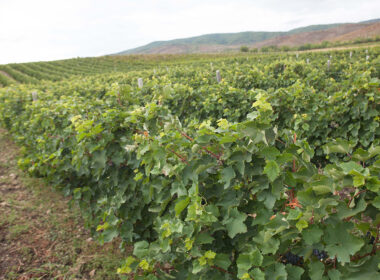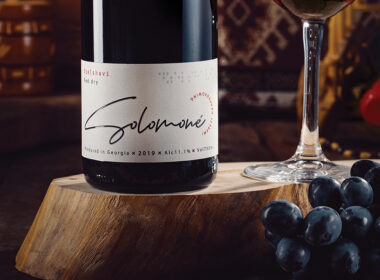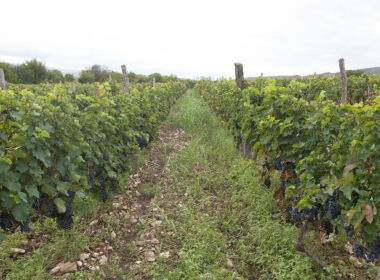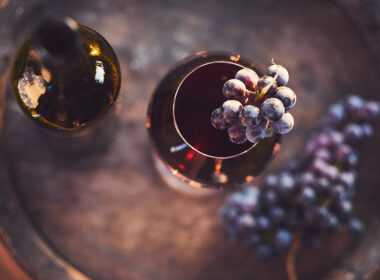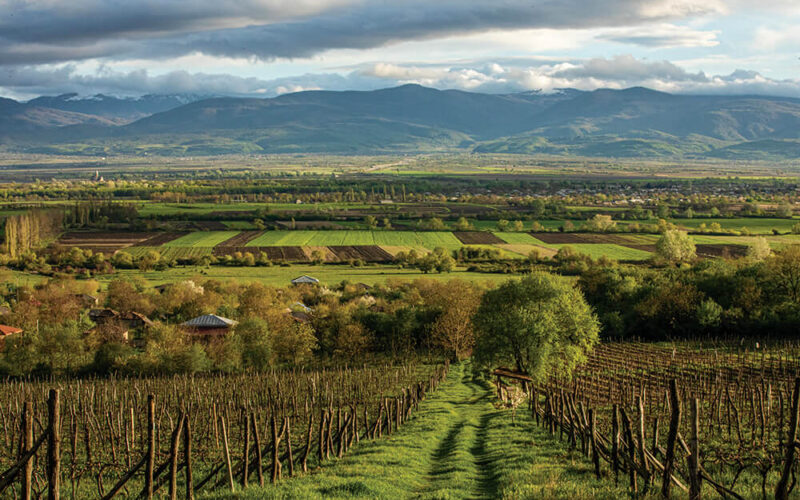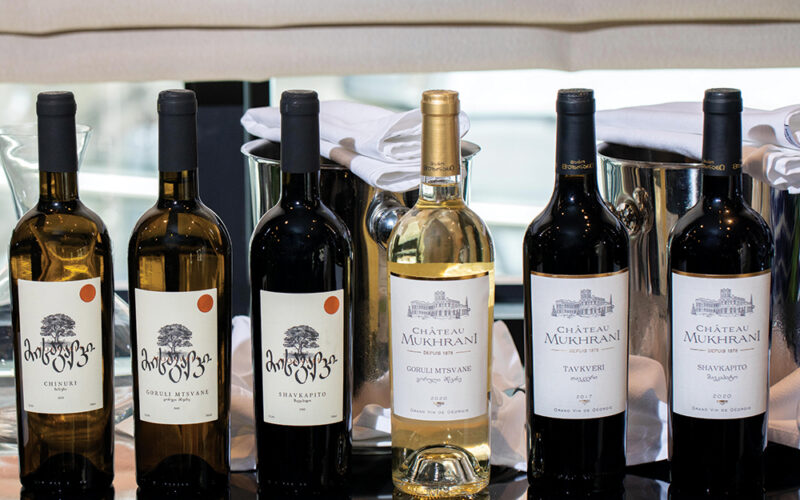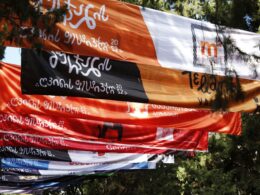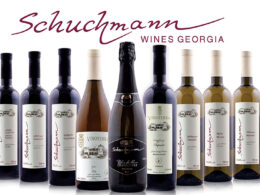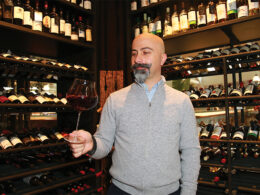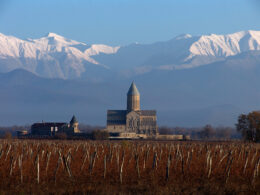The history of “Babaneuri’s Marani” starts in 2004, when the Idoidze family bought their first plot of land in the village of Babaneuri. Today, built upon a slope that equates to 15 hectares of land, surrounded by a natural reserve, are vineyards, a boutique hotel, and the marani (cellar) in front of which unfolds a view so beautiful that it is hard to watch the local dusks and dawns unaffected.

“At first, we started with 2 hectares of land, “ Says Vakho Idoidze, who together with his big family- his father, Anzor Idoidze, his wife, Nino Ninua, and their four children, own and host the Estate. My entire childhood I’d hear about how unique this southern slope was since the best grapes grew there. The 2 hectares of land purchased in 2004 used to be an old vineyard, which we began to restore, and then plant Saperavi there. In the following years, we increased the acreage, and since these plots of land are considered to be within Kisi’s PDO zone, we planted that very variety here. This was later followed by Akhmeturi Mtsvane- a unique wine grape variety, and then, after Rkatsiteli, this year we added two more plots and planted Khikhvi too. Today, the overall size of Babaneuri’s Marani vineyards consist of 12 hectares, where primarily Kakhetian varieties- Rkatsiteli, Mtsvane, Khikhvi, Kisi, and Saperavi are represented. We make wines from the grapes we yield, which is very important for quality control.”
We travelled to Babaneuri in Spring and visited the vineyards together with Vakho and Nino, we then moved on to the marani. Vakho is personally involved in every stage of the winemaking, he takes care of the vineyards, washes qvevries, and makes wine of up to 6000 bottles by himself. He is in charge of exporting to Germany, the Netherlands, England, and America. He plans on becoming more active in regard to America, which will increase production as well.
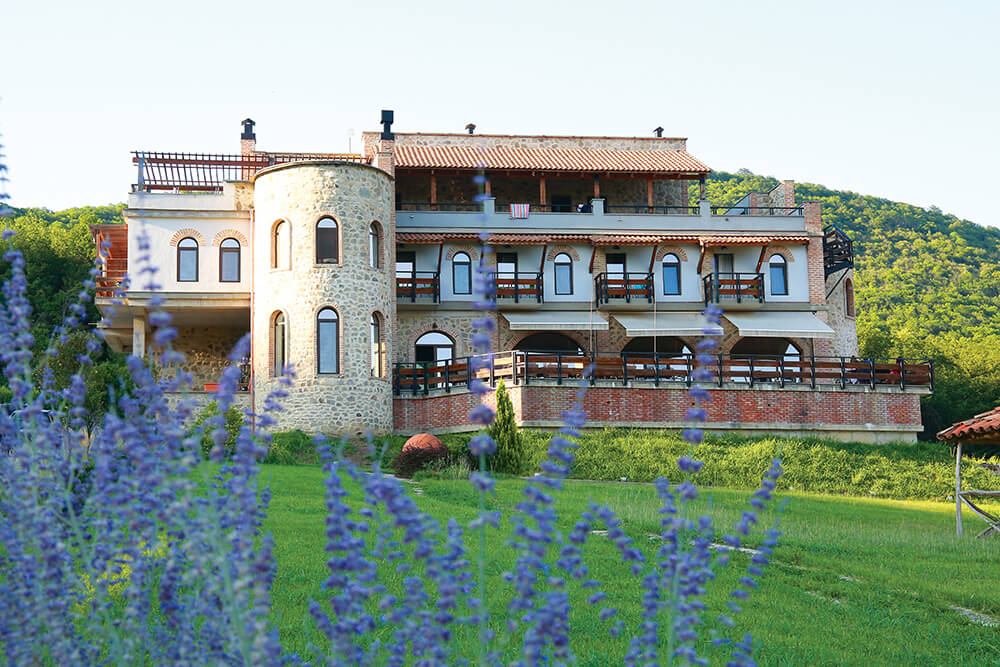
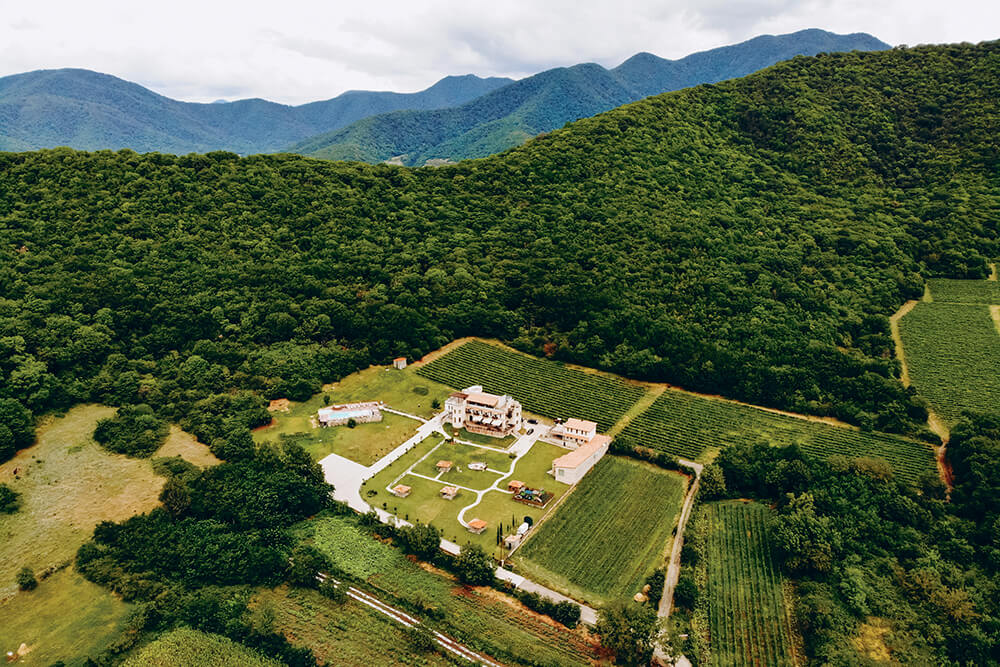
The rain had stopped days before, and it is a sunny day. We are strolling down the vineyards of Babaneuri’s marani, Nino and Vakho’s younger children are walking alongside us whilst playing with their dog- Shiva, an American Akita. Vakho is reminiscing about the times when they first set up the wine cellar in 2009, in the village of Kvemo Alvani. They purchased twenty-four, 50L qvevries, planted them, and began to make wine. A few years later, the process was moved to Babaneuri: “We did not have a problem making the wine in Alvani’s marani, we would normally only face problems when the question of storing the wine arose. It is difficult to make a cellar there as there is water nearby. As we were unable to store it, I had to work with young wine at all times, so one day, we sat down and said: It’s better to set up the cellar here, in Babaneuri, near the vineyard itself. In December 2015, this idea turned into a plan, and that’s how it began. Soon, we planted qvevries as well, which was the best decision, as nowadays I can carry the harvested grapes from our vineyard to the marani in just 5-8 minutes, so there is no longer the need for long-distance transportation. I can then cool them down and press them inside the qvevries. It has a very positive effect on the quality of the wine too, particularly when we are using wild yeast, and the wine is made in a natural way.
Nino says that, for years, while partaking in international exhibitions, she was often asked whether there was a possibility to taste the wines on the spot and view the vineyards and the marani, as well.
“The consumers were always interested in seeing who was behind each bottle, what the history of the marani and the winemaker is. This served as a reason to set up Babaneuri’s marani the way it is today.” So, one day, Vakho and his father Anzori decided to sell everything in Tbilisi and move to Babaneuri. That’s how the boutique hotel was added to Babaneuri’s Marani vineyards, which host visitors, wine lovers, and connoisseurs from Europe, Asia, and America.
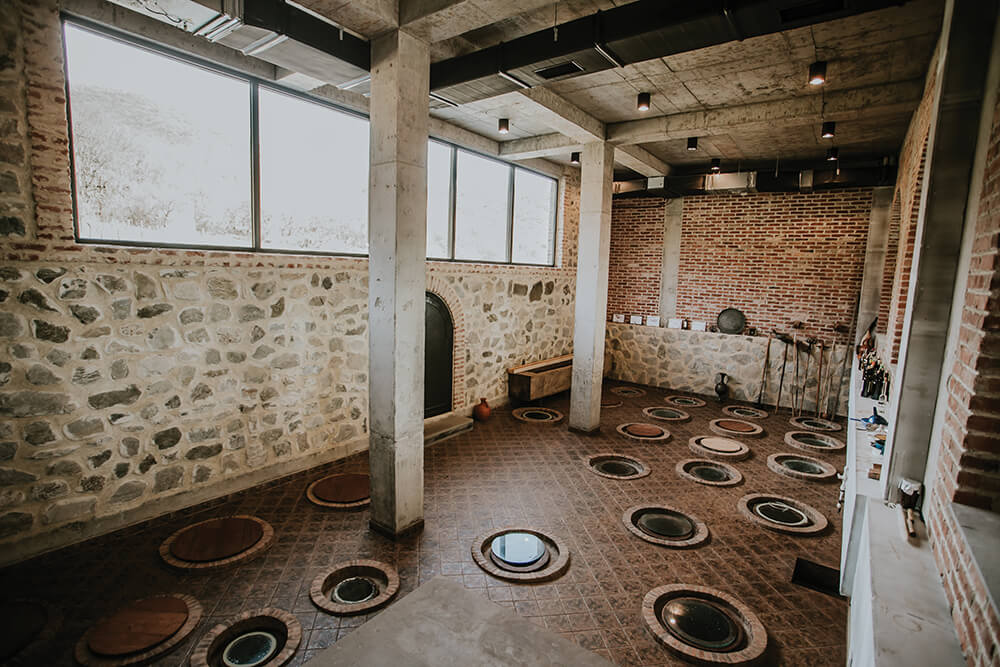
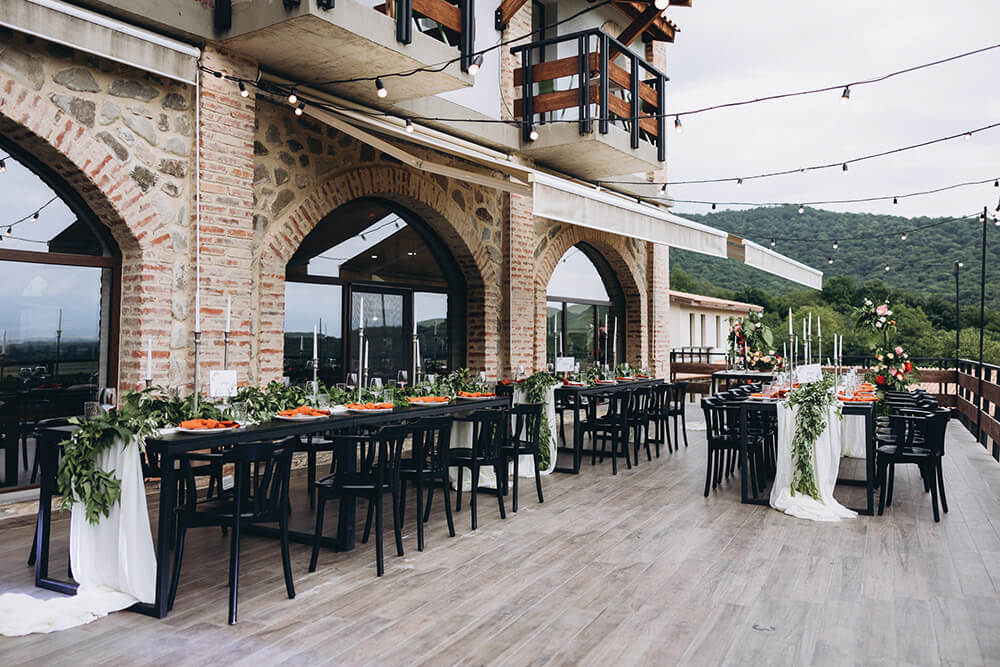
There are 13 rooms in the hotel in addition to a marani, a conference hall, a restaurant, and an open pool, which is surrounded by the natural reserve, where, within 14 kilometres, footpaths and viewing balconies have been set up. The Babaneuri’s Marani kitchen consists of tasty dishes prepared with local ingredients, all of these topped with our marani wines. Nothing beats the tasting of gastronomic pairings on the hotel’s veranda.
The marani is situated on the ground floor of the hotel with a 24 thousand litre capacity, 26 qvevries, and there is a wine cellar nearby for ageing wines. We are continuing the conversation, with “the big wine family,” with the 2016 qvevri Rkatsiteli, which is very rich and complex.

“The most laborious times are the harvest periods-” Vakho says- “followed with taking care of the qvevries, as washing them is a job which can be very difficult for me to entrust anyone else with. All of our resources have been invested in the development of our winery and the hotel. We are doing what we love the most, and of my four children, if at least one of them decides to stand by my side to carry on the business, I will be truly happy. I am doing all of this for them, and it is for them that the history of Babaneuri’s Marani is being written.”
The village of Babaneuri is situated 450-500 meters above sea level. Here, on the slope, the vineyards are steep. The summer’s sunniest hours are less hot, which is followed by the cold nights of Akhmeta. All of these increase the concentration of flavours inside the grape, which later is very well expressed within the wine itself.
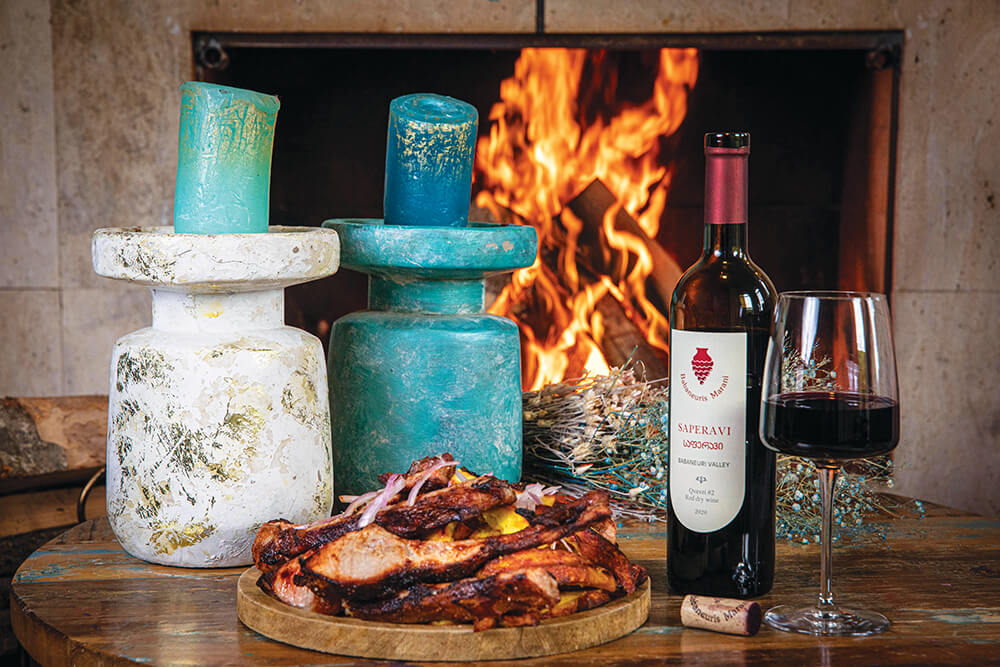
By the end of the evening, we are tasting the Babaneuri’s Marani Saperavi, which has been both fermented and aged in qvevri. The micro-oxygenation aromas are well developed, together with the varietal aromas of red cherry, black plum, black pepper, and blackberry; the earthy and forest undertones are brought forth. As Sommelier Tazo Tamazashvili points out, this wine resembles Malbec, since similarly to Malbec, the hints of eucalyptus and mint (herbal) tones can be detected.

“Our foreign guests fall in love with Babaneuri’s Marani qvevri wines-” says Vakho- “this, for us, is highly motivating. When they leave, they carry some for themselves as well as for their friends, so that they can show it to them and make them fall in love with it too. As it stands, all of our guests return to their homelands as the ambassadors of Georgian wine.”
მოგზაურობა ღვინის დიდ ოჯახთან ერთად „ბაბანეურის მარანში“
ბაბანეურის მარნის ისტორია 2004 წლიდან იწყება, როდესაც იდოიძეების ოჯახმა პირველი მიწა შეიძინა სოფელ ბაბანეურში, ამ ფერდზე, სადაც დღეს, ვენახები, ბუტიკ-სასტუმრო და მარანი უკვე 15.5 ჰექტარ ფართობზეა გაშენებული, გარშემო ნაკრძალი აკრავს, წინ კი იმდენად დიდებული ხედი იშლება, ძნელია, გულგრილად უყურო აქაურ აისებს და დაისებს.
„თავიდან 2 ჰექტარი მიწით დავიწყეთ, – გვიყვება ვახო იდოიძე, რომელიც თავის დიდ ოჯახთან – მამასთან, ანზორ იდოიძესთან, მეუღლე ნინო ნინუასთან და ოთხ შვილთან ერთად ამ მამულის მეპატრონე და მასპინძელია. მთელი ბავშვობა მესმოდა, რომ ბაბანეურში სწორედ სამხრეთის ფერდი იყო გამორჩეული და აქ ყოველთვის საუკეთესო ხარისხის ყურძენი მოდიოდა. 2004 წელს ნაყიდ 2 ჰექტარზე ძველი ნავენახარი იყო, რომლის განახლება დავიწყეთ და საფერავი გავაშენეთ. შემდეგ წლებში მიწის ფართობი გავზარდეთ – რადგან ბაბანეურის ეს ნაკვეთები ქისის ადგილწარმოშობის ზონას მიეკუთვნება, აქ სწორედ ეს ჯიში გავაშენეთ. ამას მოჰყვა ახმეტური მწვანე – უნიკალური საღვინე ჯიში, შემდეგ კი რქაწითელი. წელს, კიდევ ორი ახალი ნაკვეთი დავამატეთ და ხიხვიც გავაშენეთ. დღეს, ბაბანეურის მარნის ვენახების საერთო ფართობი 12 ჰექტარს შეადგენს, სადაც ძირითადი კახური ჯიშები – რქაწითელი, მწვანე, ქისი, ხიხვი და საფერავია წარმოდგენილი. ღვინოებს ჩვენივე მოყვანილი ყურძნით ვაყენებთ, რაც ძალიან მნიშვნელოვანია ხარისხის გასაკონტროლებლად.“
ბაბანეურში გაზაფხულზე ჩავედით. ნინოსთან და ვახოსთან ერთად ვენახები მოვინახულეთ, შემდეგ კი მარანში გადავინაცვლეთ. ყველა პროცესში, რომელიც ღვინის დაყენებას უკავშირდება, ვახო თავად არის ჩართული. უვლის ვენახებს, რეცხავს ქვევრებს, თავად აყენებს ღვინოს, წელიწადში 6000 ბოთლამდე. ექსპორტზე გერმანიაში, ჰოლანდიაში, ინგლისსა და ამერიკაში გააქვს. ამბობს, რომ ამერიკის მიმართულებით გააქტიურებას გეგმავს, რაც მომავალში რაოდენობის ზრდასაც გაპირობებს.
წვიმები წინა დღეებში შეწყდა და მზიან დილას ბაბანეურის მარნის ვენახებში მივაბიჯებთ, ნინოს და ვახოს უმცროსი შვილები მარიამი და მათე მოგვყვებიან და თან ამერიკული აკიტას ჯიშის ძაღლს, შივას ეთამაშებიან.
ვახო იხსენებს, როგორ მოაწყვეს პირველი მარანი 2009 წელს, სოფელ ქვემო ალვანში. 50 ათასი ლიტრის მოცულობის 24 ქვევრი შეიძინეს და დარგეს. ღვინის დაყენებაც იქ დაიწყეს. რამდენიმე წლის შემდეგ კი როგორ გადმოინაცვლა ყველა პროცესმა ბაბანეურში: „ალვანის მარანში ღვინის დაყენების პრობლემა კი არ გვქონდა, პრობლემის წინაშე მაშინ ვდგებოდით, როცა საქმე ღვინის შენახვაზე მიდგებოდა. იქ სარდაფის გაკეთება რთულია, წყალია ახლოს. რადგან ვერ ვინახავდით, ახალი ღვინით მიწევდა სულ მუშაობა. ერთ დღესაც დავსხედით და ვთქვით: სჯობს, აქვე, ბაბანეურში, ვენახთან ახლოს გავაკეთოთ მარანი. 2015 წლის დეკემბერში ეს იდეა მონახაზად იქცა და ასე დავიწყეთ. მალე ქვევრებიც დავრგეთ, რაც საუკეთესო გადაწყვეტილება იყო, რადგან აქვე, ჩვენ ვენახებში მოკრეფილი ყურძენი 5-8 წუთში შემიძლია მოვიტანო მარნამდე ისე, რომ დიდი მანძილზე ტრანსპორტირება არ დამჭირდეს, გავაგრილო და ქვევრებში ჩავწურო. ღვინის ხარისხზე ეს დადებითად მოქმედებს, მით უმეტეს, როცა ველურ საფუარს ვიყენებთ და ღვინოც ნატურალური გზით არის წარმოებული.“
ნინო ამბობს, რომ წლების განმავლობაში, ღვინის საერთაშორისო გამოფენებზე მონაწილეობისას, უფრო ხშირად ისმოდა კითხვა, იყო თუ არა ამ ღვინოების ადგილზე დაგემოვნების, ვენახებისა და მარნის მონახულების შესაძლებლობა. „მომხმარებელს ყოველთვის აინტერესებს, ვინ დგას თითოეული ბოთლის მიღმა, როგორია მარნის, მეღვინის ისტორია. ეს გახდა კიდეც მიზეზი, ბაბანეურის მარანი მოგვეწყო ისეთი სახით, როგორიც დღეს აქვს.“ აი, ასე, ერთ დღეს, ვახომ და მისმა მამამ, ბატონმა ანზორმა მიიღეს გადაწყვეტილება, თბილისში ყველაფერი გაეყიდათ და ბაბანეურში წამოსულიყვნენ. ასე შეემატა ბაბანეურის მარნის ვენახებს ბუტიკ-სასტუმრო, რომელიც ვიზიტორებს, მათ შორის, ღვინის მოყვარულებსა და დამფასებლებს ევროპიდან, აზიიდან და ამერიკიდან მასპინძლობს.
სასტუმროში 13 ნომერია, მარანი, საკონფერენციო დარბაზი, რესტორანი, ღია აუზი, ირგვლივ კი ნაკრძალი აკრავს, სადაც 14 კილომეტრზეა მოწყობილი საფეხმავლო ბილიკები და გადასახედი აივნები. ბაბანეურის მარნის სამზარეულო ადგილობრივი ინგრედიენტებისგან მომზადებული გემრიელი კერძებისგან შედგება, რასაც ემატება აქაური მარნის ღვინოები. გასტრონომიული წყვილების დაგემოვნებას კი სასტუმროს ვერანდაზე ნამდვილად არაფერი სჯობს.
მარანი სასტუმროს ქვედა სართულზეა, 24 ათასი ლიტრის მოცულობის 26 ქვევრით, იქვე კი სარდაფია, საძველო ღვინოებისთვის. ღვინის დიდ ოჯახთან საუბარი 2016 წლის ქვევრის რქაწითელით გრძელდება, რომელიც ძალიან მდიდარი და კომპლექსურია. „ყველაზე შრომატევადი რთვლის პერიოდია, – ამბობს ვახო – შემდეგ მოდის ქვევრების მოვლა, რეცხვა და ეს ის საქმეა, რომელიც ძალიან გამიჭირდება ვინმეს მივანდო. მთელი ჩვენი რესურსი ჩვენივე მეღვინეობის და სასტუმროს განვითარებაში გვაქვს ჩადებული. იმას ვაკეთებთ, რაც ასე ძალიან გვიყვარს. ოთხი შვილიდან მომავალში ერთი მაინც თუ დამიდგება გვერდით და ამ საქმეს გააგრძელებს, ნამდვილად გამიხარდება. მათთვის ქმნი ამ ყველაფერს და მათთვის იწერება ბაბანეურის მარნის ისტორიაც.“
სოფელი ბაბანეური ზღვის დონიდან 450-500 მეტრზე მდებარეობს. აქ ფერდობზე დახრილი ვენახებია. ზაფხულის მზესაათები ნაკლებმცხუნვარეა, რასაც ახმეტის ცივი ღამეები ერთვის. ეს ყველაფერი ყურძნის მარცვალშივე ზრდის არომატების კონცენტრაციას, რაც შემდგომ ძალიან კარგად არის გადმოცემული ღვინოში. დღის ბოლოს, „ბაბანეურის მარნის“ საფერავს ვაგემოვნებთ, რომელიც ქვევრშია დადუღებული და დავარგებული. კარგად აქვს განვითარებული მიკროოქსიდაციული არომატები, ჯიშურ არომატებთან ერთად – წითელი ალუბალი, შავი ქლიავი, შავი წიწაკა, მაყვალი; წინ არის წამოწეული მიწისეული და ტყის ტონები. როგორც სომელიე თაზო თამაზაშვილი აღნიშნავს, ეს ღვინო ჰგავს მალბეკს, რადგან მასში მალბეკისთვის დამახასიათებელი ოდნავ ევკალიპტისა და პიტნის ტონებიც (ჰერბალური) იგრძნობა.
„ჩვენს უცხოელ სტუმრებს ძალიან უყვარდებათ ბაბანეურის მარნის ქვევრის ღვინოები – ამბობს ვახო – რაც ჩვენთვის ძალიან დიდი სტუმულია. გამგზავრებისას, თავისთვისაც მიაქვთ და მეგობრებისთვისაც, რათა მათაც გააცნონ და შეაყვარონ. ასეა, ჩვენი ყველა სტუმარი თავის ქვეყანაში ქართული ღვინის ელჩად ბრუნდება.“

